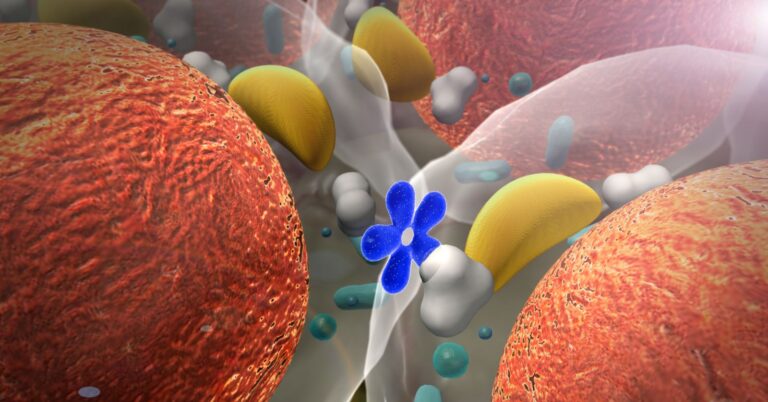What Is Perimenopause Mood Swings vs PMS? How to Tell the Difference
One week, you’re shedding tears over toothpaste commercials, while the next, you’re livid over someone leaving the milk cap off. Is this just the onset of PMS, or are you about to embark on the rollercoaster ride of perimenopause?
If you’re in your late 30s or 40s and suddenly find that your mood is more unpredictable than ever, you’re not imagining things. Hormonal shifts are occurring, and the once-familiar PMS symptoms may be transforming into something more intense, erratic, or persistent.
Dr. Mary Jane Minkin, an OB-GYN and menopause expert at Yale School of Medicine, explains that PMS follows a predictable pattern, while perimenopause is akin to PMS on shuffle.
How can you identify which one you’re dealing with, and what actions can you take?
PMS vs. Perimenopause Mood Swings: The Quick Answer
| Feature | PMS | Perimenopause |
|---|---|---|
| Age Range | Teens to early 40s | Typically late 30s to mid-50s |
| Timing | Predictable (7–14 days before period) | Unpredictable; can last weeks or randomly occur |
| Cycle | Regular menstrual cycle | Irregular cycles or missed periods |
| Mood Patterns | Irritability, sadness, crying spells | Anxiety, rage, depression, brain fog |
| Physical Signs | Bloating, cramps, breast tenderness | Hot flashes, night sweats, sleep issues, vaginal dryness |
| Hormones Involved | Estrogen drops before menstruation | Fluctuating estrogen and progesterone |
What Exactly Is Perimenopause?
Perimenopause is the transitional phase before menopause. It can last 4–10 years, usually starting in your late 30s or 40s, as your ovaries begin to slow down hormone production—especially estrogen and progesterone.
During this time, you might still get periods (though less regularly), but hormone surges and crashes become unpredictable—causing mood swings that don’t follow a consistent pattern like PMS does.
Key Signs It Might Be Perimenopause, Not PMS
1. Mood Swings Hit Anytime, Not Just Before Your Period
Unlike PMS, which has a clear “start and end” around your menstrual cycle, perimenopausal mood swings can show up mid-cycle, post-period, or with no clear timing at all.
2. Anxiety and Rage Are New Symptoms
PMS is typically marked by sadness and irritability. But perimenopause can bring:
- Sudden anxiety
- Ragey outbursts
- Paranoia or overwhelm
- Feeling “out of body”
“A lot of women think they’re going crazy or developing a mood disorder,” says Dr. Anna Cabeca, DO, hormone specialist. “In truth, their hormones are shifting faster than their bodies can keep up.”
3. Your Sleep Is a Disaster
Perimenopausal mood swings are often linked to sleep disruptions, which make emotional regulation even harder. PMS might cause sleepiness, but perimenopause often causes:
- Trouble falling asleep
- Waking at 2–4 a.m. with anxiety
- Night sweats disrupting rest
4. Periods Are Changing
If your periods are becoming shorter, heavier, lighter, or MIA, it’s likely not just PMS. These are hallmark signs of the hormonal shifts in perimenopause.
5. Physical Symptoms Have Changed
New symptoms often appear:
- Hot flashes
- Vaginal dryness
- Weight gain around the midsection
- Lower libido
- Joint pain
PMS doesn’t usually cause these, but perimenopause often does.
What’s Happening in Your Hormones?
- PMS is triggered by a predictable drop in estrogen and progesterone 1–2 weeks before your period.
- Perimenopause is driven by wild fluctuations: some months your estrogen might spike abnormally high; other months, it plummets suddenly.
This hormonal chaos affects neurotransmitters like serotonin and GABA, leading to:
- Mood instability
- Anxiety
- Fatigue
- Decreased motivation
How to Manage Perimenopausal Mood Swings Naturally
1. Track Your Cycle & Mood
Use apps like Clue, Flo, or a simple paper journal. Log mood, sleep, period timing, and symptoms.
2. Support Hormone Balance With Food
- Magnesium-rich foods: leafy greens, pumpkin seeds
- Healthy fats: avocado, olive oil, salmon
- Adaptogens: maca root, ashwagandha (check with your doctor first)
3. Try Seed Cycling or Herbal Teas
- Seed cycling (flax + pumpkin in follicular phase; sesame + sunflower in lutea
- Herbal teas: chasteberry, red clover, dong quai
4. Exercise for Endorphins & Hormone Regulation
Low-impact workouts like walking, yoga, or strength training regulate cortisol and boost feel-good hormones.
5. Talk to Your Doctor About Bioidentical or Low-Dose HRT
You don’t have to wait until full menopause to explore treatment. Low-dose hormonal therapy or natural progesterone may stabilize mood.
If your emotions feel like they’ve been hijacked, you’re not broken; you’re simply hormonally transitioning.
Knowing the distinction between PMS and perimenopausal mood swings is the initial step toward finding relief. With the appropriate tools, lifestyle modifications, and support, you can navigate this phase with resilience, composure, and a well-thought-out plan.
Dr. Cabeca emphasizes that this is not the end of who you are, but rather the beginning of comprehending your body on a deeper level.
Check out the healthlynic ✔️approved range of products for Weight Loss, Improve metabolism and much more!







